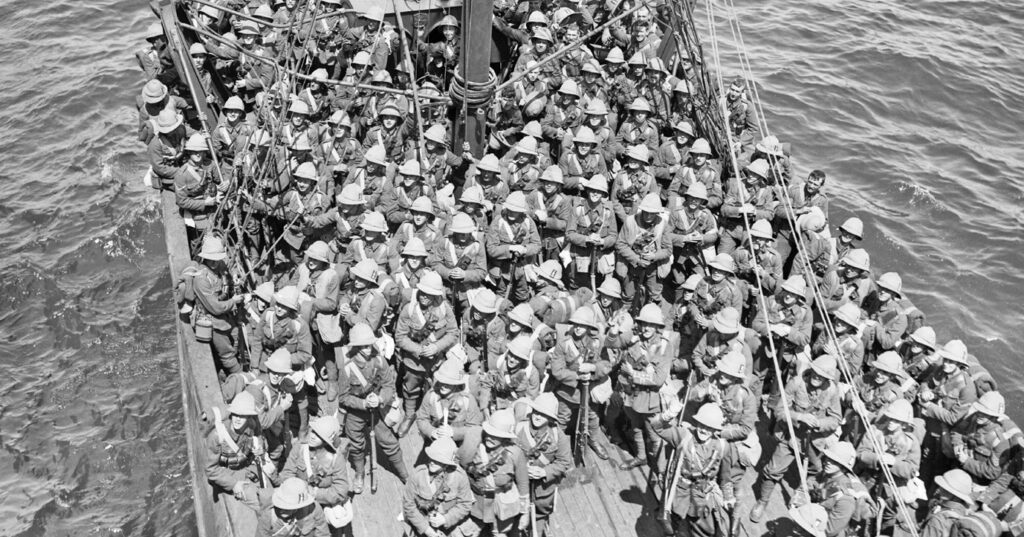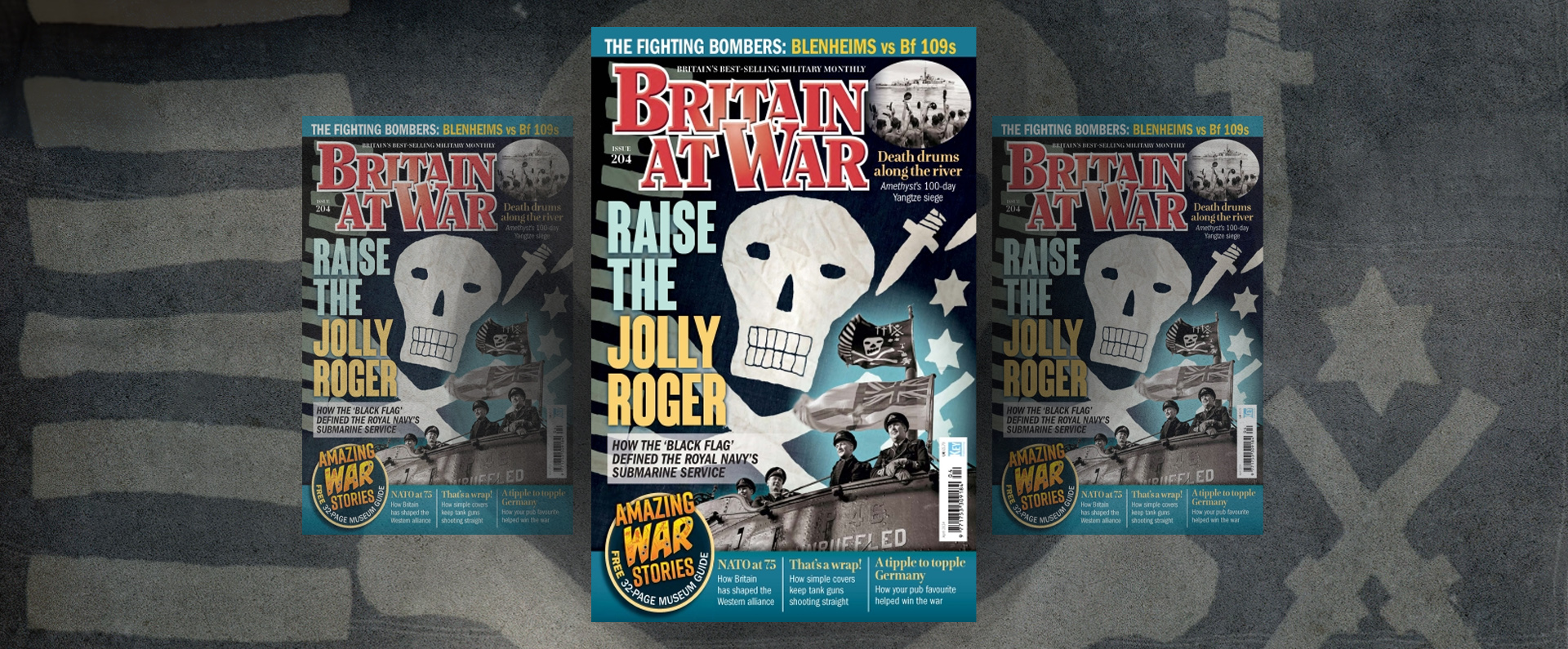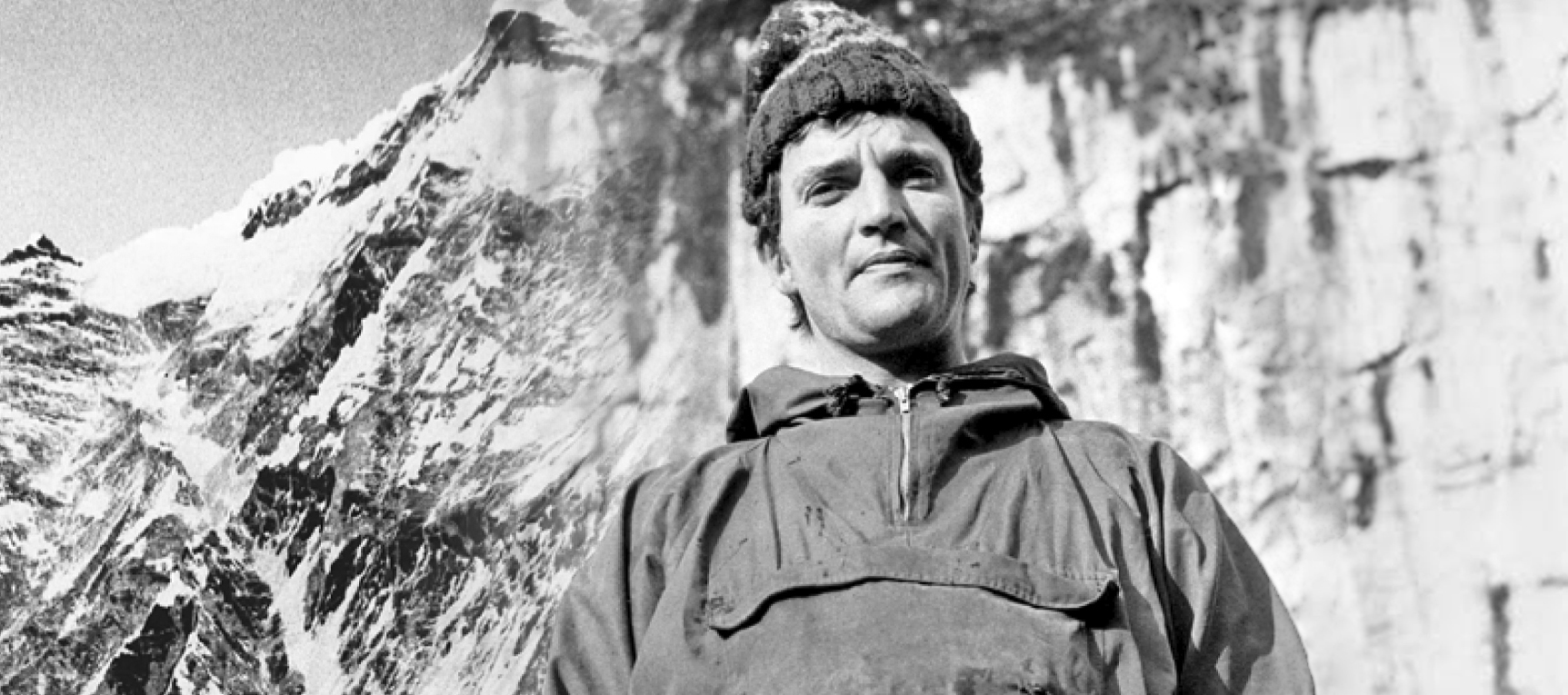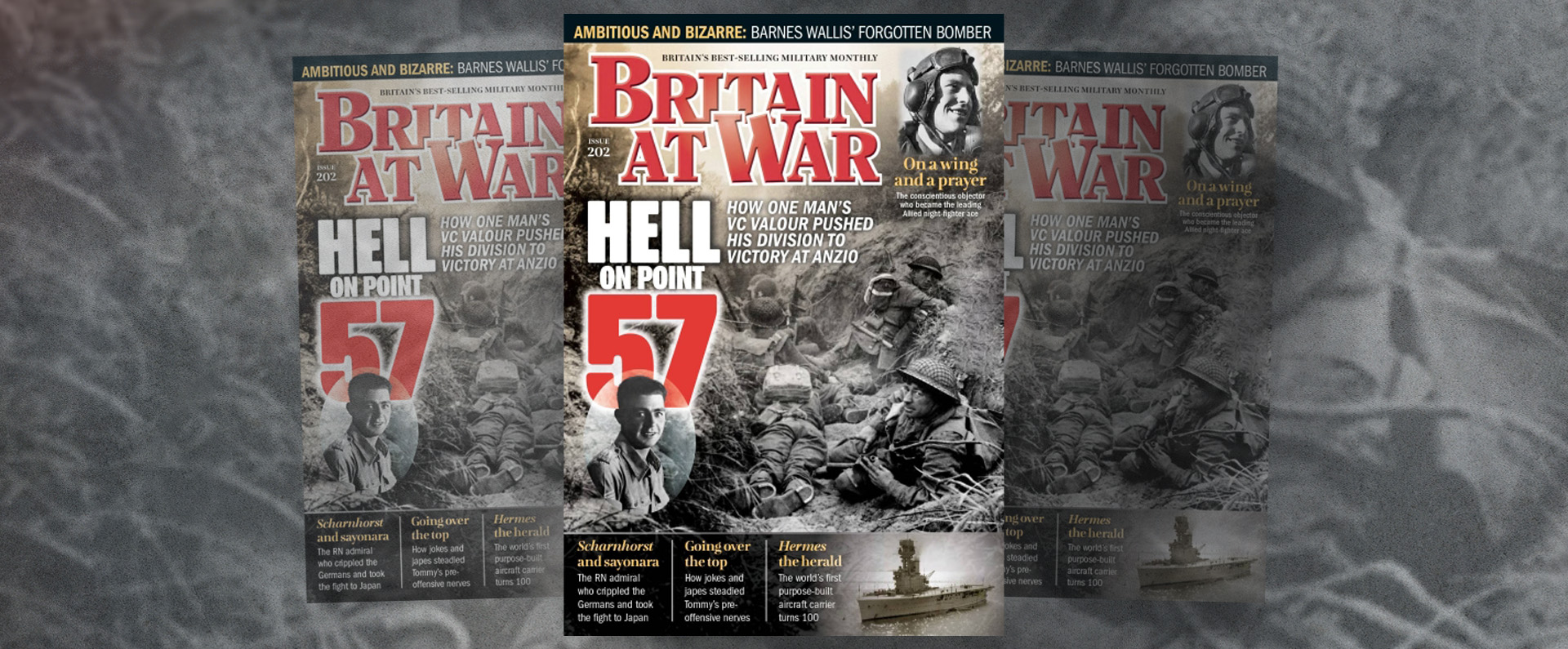
Published in Britain at War in August 2021.
Major Richard Raymond Willis VC
Major Richard Willis was one of the famous “Six Before Breakfast” VCs awarded for acts of incredible bravery during the Gallipoli landings. Willis, then a captain, and his comrades from the 1st Battalion, The Lancashire Fusiliers, displayed sustained courage under the most terrifying enemy fire on April 25 1915 as they approached a small cove that had been designated as “W Beach”. As they reached the beach itself, the strength of the fire intensified.
Richard Raymond Willis was born in Woking, Surrey, on October 13 1876. He was the son of Richard Willis, a merchant, and his wife Marion (née Godfrey). Richard Willis Jnr was educated at Totnes Grammar School, Devon, and Harrow School, Middlesex, before attending the Royal Military College, Sandhurst. On February 20 1897, he was gazetted to the Lancashire Fusiliers as a second lieutenant.
Shortly afterwards, Willis joined the 2nd Battalion of the regiment in Quetta, India, although he had to return home in order to recover from enteric fever. In January 1898, he travelled with his battalion to Egypt, where it was part of Kitchener’s Army for the reconquest of the Sudan. Willis was promoted to lieutenant in 1898 and to captain two years later.
In 1900, he was transferred to the 1st Battalion from the 2nd. From July 1900 until 1915, he commanded C Company as he and his men served in Crete, Malta, Gibraltar and India. He was a talented sportsman, representing the battalion at polo and hockey, as well as being a champion shot with a revolver, a gifted linguist and a musician, Willis married Maude Temple, the daughter of an Army officer, in Marylebone, central London, on July 10 1907, and the couple went on to have a daughter and two sons.
After the outbreak of the Great War in August 1914, the 1st Battalion arrived back in the UK on Christmas Day, 1914. On March 28 1915, the battalion arrived in Alexandria to prepare for their part in the Gallipoli campaign. On April 25 1915, while two companies from the 2nd Battalion landed at X Beach north of Cape Tekke, four companies from the 1st Battalion were ordered to land at W Beach. A small, sandy cove between Cape Helles and Tekke Burnu, it was so well defended that the Turks may have regarded it as impregnable.
Captain Willis, who led his beloved C Company during the attack, was one of several survivors to provide a vivid description of the events of the day: “Not a sign of life was to be seen on the Peninsula in front of us. It might have been a deserted land we were nearing in our little boats. Then crack! . . . The signal for the massacre had been given; rapid fire, machine-guns and deadly accurate sniping opened from the cliffs above, and soon the casualties included the rest of the crew and many men.
“The timing of the ambush was perfect; we were completely exposed and helpless in our slow-moving boats, just target practice for the concealed Turks, and within a few minutes only half of the thirty men in my boat were left alive. We were now 100 yards from the shore, and I gave the order ‘overboard’. We scrambled out into some four feet of water and some of the boats with their cargo of dead and wounded floated away on the currents still under fire from the snipers. With this unpromising start the advance began. Many were hit in the sea, and no response was possible, for the enemy was in trenches well above our heads.
“We toiled through the water towards the sandy beach, but here another trap was awaiting us, for the Turks had cunningly concealed a trip wire just below the surface of the water and on the beach itself were a number of land mines, and a deep belt of rusty wire extended across the landing place. Machine-guns, hidden in caves at the end of the amphitheatre of cliffs, enfiladed this.
“Our wretched men were ordered to wait behind this wire for the wire-cutters to cut a pathway through. They were shot in helpless batches while they waited, and could not even use their rifles in retaliation since the sand and the sea had clogged their action. One Turkish sniper in particular took a heavy toll at very close range until I forced open the bolt of a rifle with the heel of my boot and closed his career with the first shot, but the heap of empty cartridges round him testified to the damage he had done. Safety lay in movement, and isolated parties scrambled through the wire to cover. Among them was Sergeant Richards with a leg horribly twisted, but he managed somehow to get through.”
Captain Harold Clayton, who survived the landings but was killed in action two months later, also described desperate scenes: “There was tremendously strong barbed wire where my boat was landed. Men were being hit in the boats as they splashed ashore. I got up to my waist in water, tripped over a rock and went under, got up and made for the shore and lay down by the barbed wire. There was a man there before me shouting for wire-cutters. I got mine out, but could not make the slightest impression. The front of the wire was by now a thick mass of men, the majority of whom never moved again. The noise was ghastly and the sights horrible.”
The Lancashire Fusiliers had started the day with 27 officers and 1,002 other men. Twenty-four hours later a head count revealed just 16 officers and 304 men. The London Gazette of August 24 1915 reported that the Fusiliers “were met by a very deadly fire from hidden machine-guns which caused a great number of casualties. The survivors, however, rushed up to and cut the wire entanglements, not withstanding the terrific fire from the enemy, and after overcoming supreme difficulties, the cliffs were gained and the position maintained. Amongst the very gallant officers and men engaged in this most hazardous undertaking, Capt. Willis, Sergt. [Alfred] Richards and Private [William] Keneally have been selected by their comrades as having performed the most signal acts of bravery.”
In a second, similar citation, delayed until March 15 1917 because of discussions over how many VCs should be awarded for the single action, three other men were awarded the VC for bravery at W Beach, again after being selected by their comrades. These were Captain Cuthbert Bromley, Sergeant Frank Stubbs and Corporal John Grimshaw. Willis, Richards, Keneally, Bromley, Stubbs and Grimshaw soon became known as the “Six Before Breakfast” VCs.
Willis had, however, been involved in heavy fighting in between the Gallipoli landings of 25 April and the announcement of his VC on 24 August. Twice in the fortnight following 25 April he escaped uninjured when men were killed just feet away from him. He took part in an action on 28 April when he led an attack by a small force in the 1st Battle of Krithia, but he and his men had to withdraw. On 2 May, he was back in action on W Beach during a major attempt by the Turks to retake the position. On 4 June, after a brief spell of sick leave, he commanded D Company in an attack that was intended to break through the Turkish lines in front of Krithia. In a day of terrifying fighting at the Third Battle of Krithia, in which the 1st Battalion suffered more than 500 casualties, Willis was shot and wounded beneath his heart. He was evacuated to Egypt and, later, to the UK.
Willis was promoted to major in September 1915 and he received his VC from George V in an investiture at Buckingham Palace on December 21 1915. After recovering from his injuries, Willis was posted to the Western Front with the 2nd Battalion. He served on the Somme and in the Ypres Salient, and in August 1916 he was made an acting lieutenant colonel, in which rank he was appointed Commanding Officer of the 1st Battalion, Royal Inniskilling Fusiliers, in January 1917. He also commanded the 8th West Ridings and 6th York & Lancasters in later operations.
In March 1917, he reverted to the rank of major and in April 1918 he was present during the German breakthrough on the Lys, when he was praised for his work in marshalling his men. At the end of the war, he returned to his regiment and was appointed as second-in-command of the 2nd Battalion. Having commanded a unit in India for a short time, Willis retired on November 26 1920 after more than twenty-three years of military service.
Willis became a teacher in 1923 and for the next six years he worked for the RAF Education Branch and, later, in private schools. Both his sons pursued Army careers (one was awarded the Military Cross) and they both eventually moved to Africa. After the outbreak of the Second World War in September 1939, Willis volunteered to work as a training officer for the Army and served at Aldershot, Hampshire. During the ‘Blitz’, he was injured while in London and needed hospital treatment. When he was recovered, he resumed his teaching career in a prep school. In 1958 Willis moved into the Lilian Faithfull Home in Cheltenham, where he lived with his wife. He died at the home on February 9 1966, aged 89.
I purchased Willis’s medal group privately in 2010 and this meant that I owned three of the ‘Six Before Breakfast’ VCs in my collection. For I had bought Corporal John Grimshaw’s medal group privately in 1999 and Sergeant Alfred Richards’ medal group at a Spink auction in London in 2005. I felt hugely privileged to be the custodian of half of these famous six VCs.
In 2014, ahead of the centenary of the Gallipoli landings, I was approached by the Fusilier Museum in Bury, Lancashire, to see if I would be willing to loan my medal groups to mark the centenary. The Fusilier Museum, which was in possession of the VCs belonging to Sergeant Frank Stubbs and Private William Keneally, hoped to unite all six VCs the following year: 2015.
I readily agreed to loan the three medal groups in my possession and the Fusilier Museum carried out some good old-fashioned detective work in order to locate the sixth and final VC – that belonging to Major Cuthbert Bromley, who was wounded in the landing. It meant that the six awards could be united for the first time in 100 years.
W Beach was eventually renamed ‘Lancashire Landing’ in honour of the Lancashire Fusiliers. In my view, the landing at the 350 yards of beach at dawn on April 25 1915 remains one of the most courageous actions ever performed by the British Armed Forces.
Download a PDF of the original Britain at War article
For more information, visit:
LordAshcroftOnBravery.com


